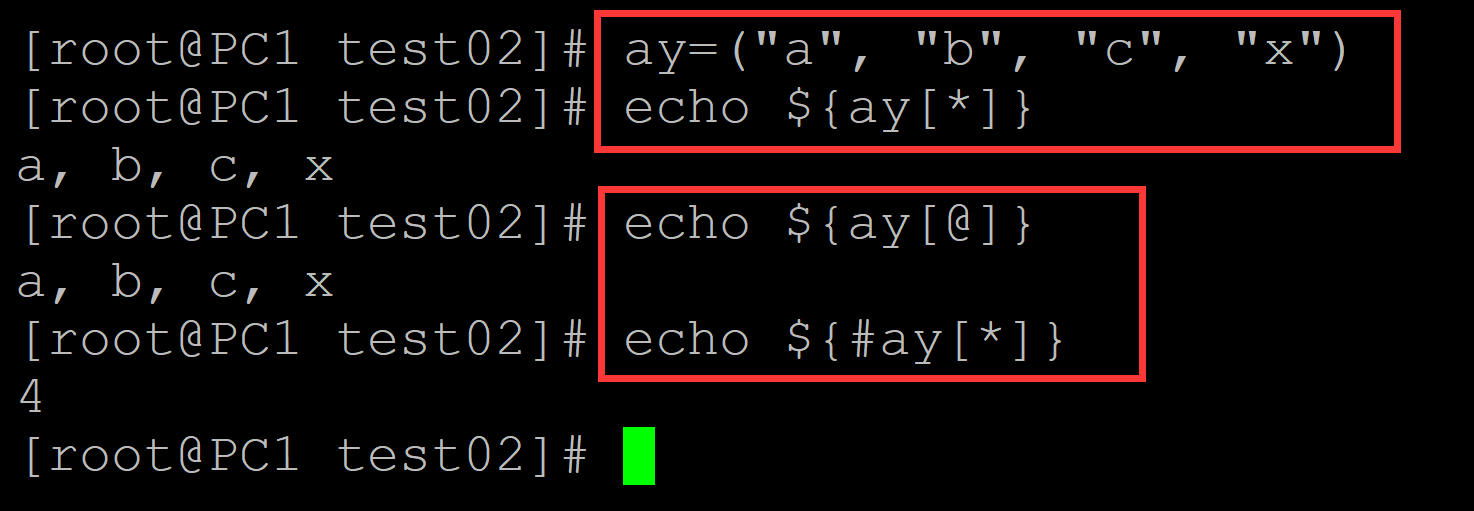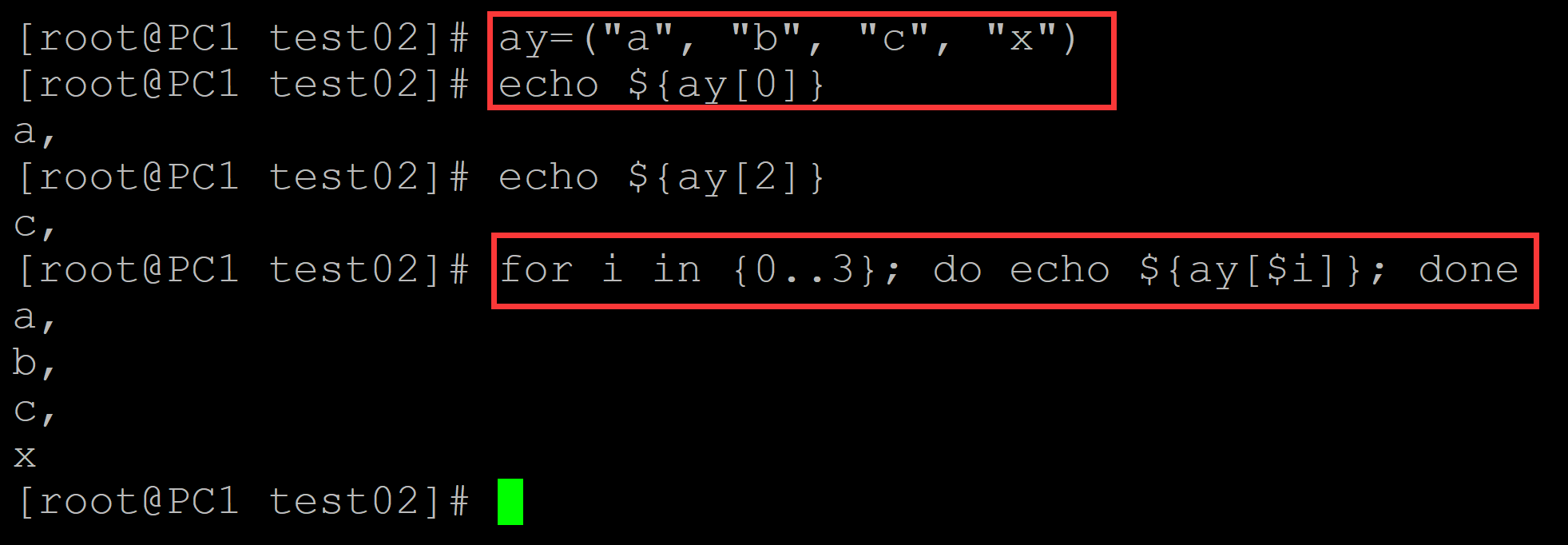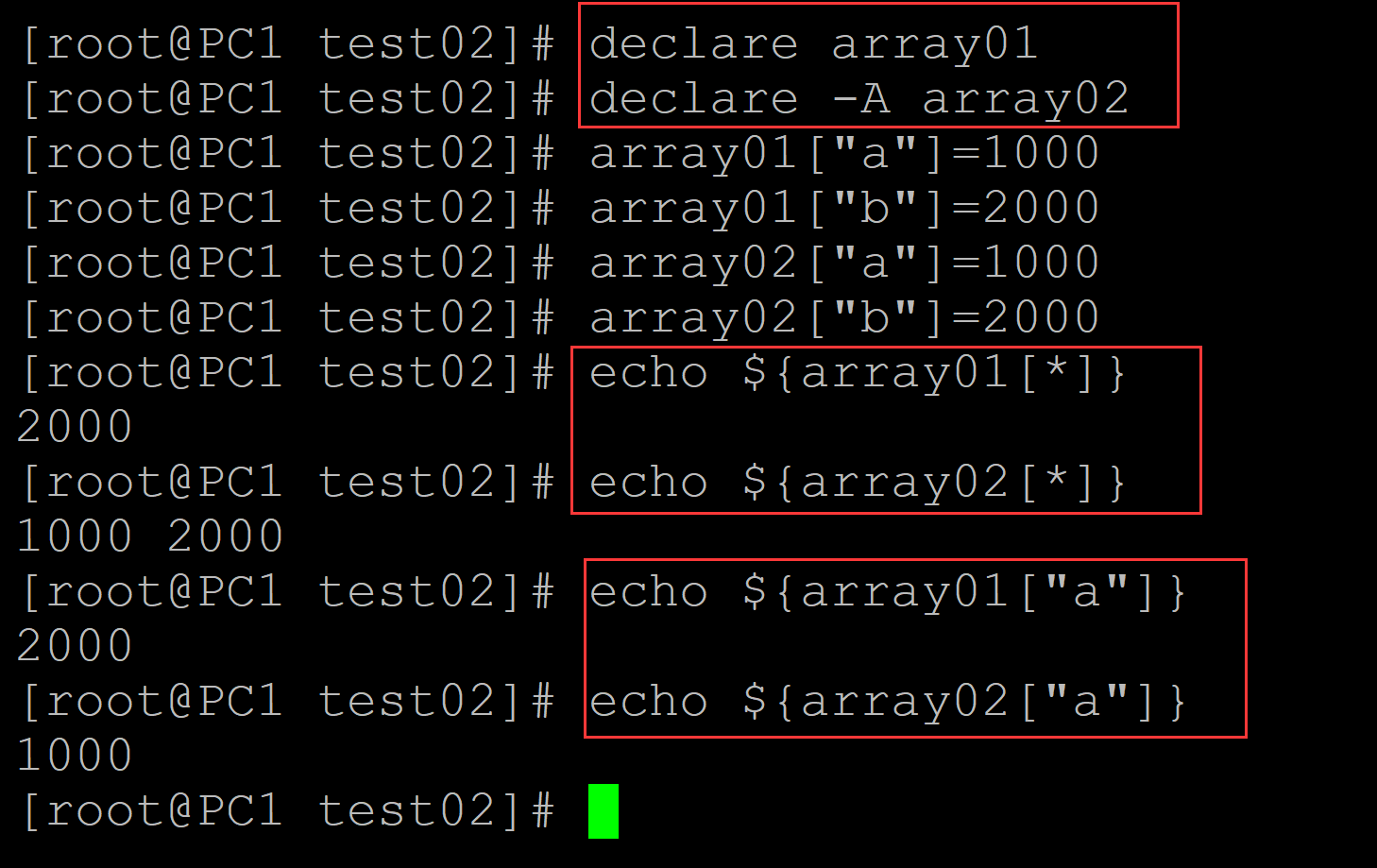linux 中 数组的常见操作
001、创建数组
[root@PC1 test02]# ay=(1 2 3 4) ## 生成数组 [root@PC1 test02]# echo ${ay[*]} ## 输出数组 1 2 3 4 [root@PC1 test02]# echo ${#ay[*]} ## 输出数组的长度 4

002、
[root@PC1 test02]# ay=("a", "b", "c", "x") ## 字符串数组 [root@PC1 test02]# echo ${ay[*]} a, b, c, x [root@PC1 test02]# echo ${ay[@]} ## 输出数组 a, b, c, x [root@PC1 test02]# echo ${#ay[*]} ## 输出数组的长度 4

003、输出单个数组元素的值
[root@PC1 test02]# ay=("a", "b", "c", "x") ## 生成数组 [root@PC1 test02]# echo ${ay[0]} ## 输出单个元素的值 a, [root@PC1 test02]# echo ${ay[2]} c, [root@PC1 test02]# for i in {0..3}; do echo ${ay[$i]}; done ## 遍历 a, b, c, x

。
004、给数组的元素赋值
[root@PC1 test02]# ay=("x" "b" "k" "j") ## 生成数组 [root@PC1 test02]# echo ${ay[*]} ## 输出数组 x b k j [root@PC1 test02]# ay[4]="m" ## 给数组的单个元素赋值 [root@PC1 test02]# echo ${ay[*]} ## 输出数组 x b k j m

005、普通数组和关联数组
[root@PC1 test02]# declare array01 ## 定义普通数组 [root@PC1 test02]# declare -A array02 ## 定义关联数组 [root@PC1 test02]# array01["a"]=1000 [root@PC1 test02]# array01["b"]=2000 [root@PC1 test02]# array02["a"]=1000 [root@PC1 test02]# array02["b"]=2000 [root@PC1 test02]# echo ${array01[*]} ## 普通数组 2000 [root@PC1 test02]# echo ${array02[*]} ## 关联数组 1000 2000 [root@PC1 test02]# echo ${array01["a"]} 2000 [root@PC1 test02]# echo ${array02["a"]} ## 关联数组可以使用其他字符正确索引 1000

。




 浙公网安备 33010602011771号
浙公网安备 33010602011771号